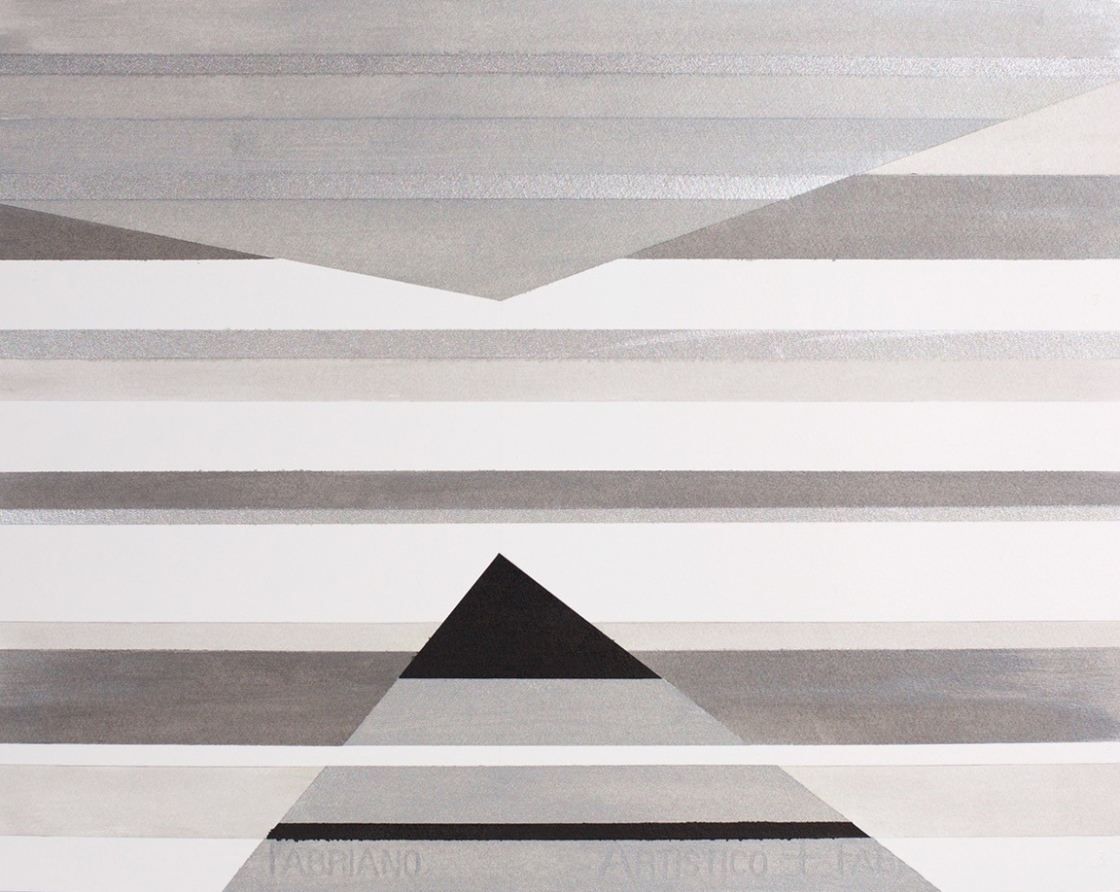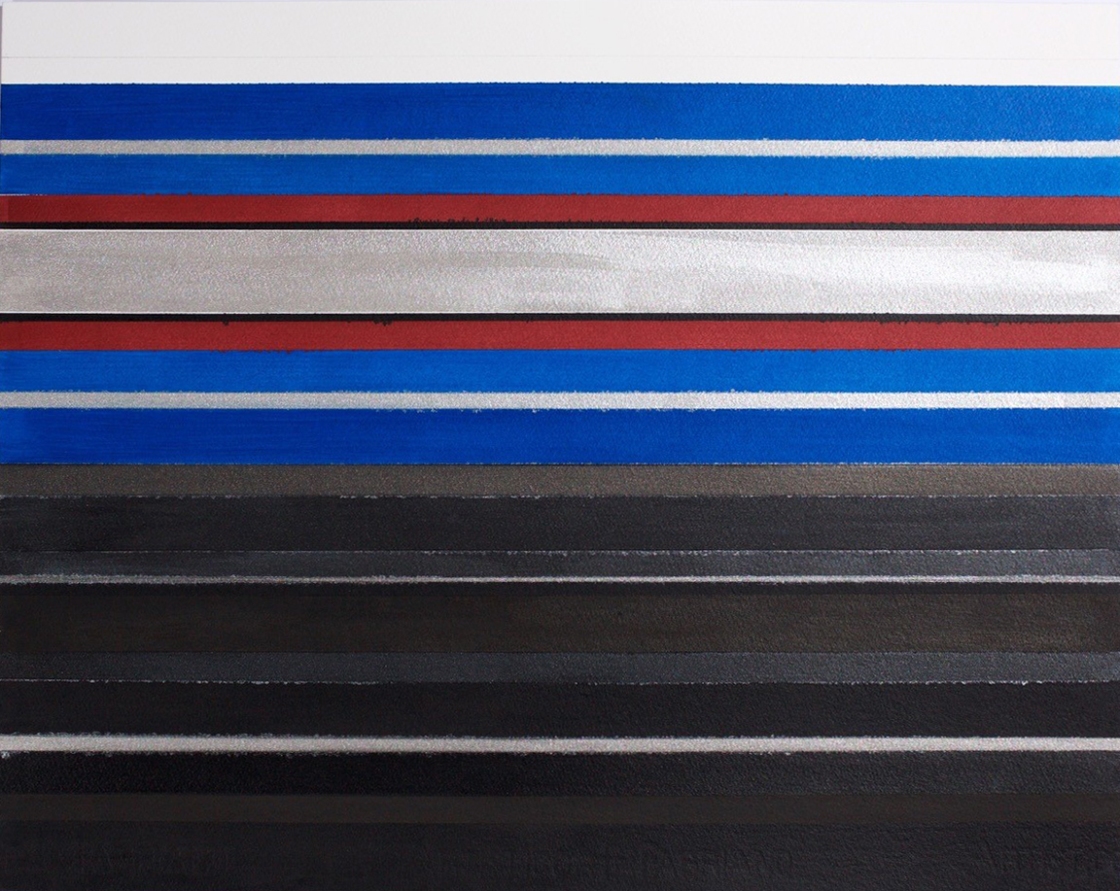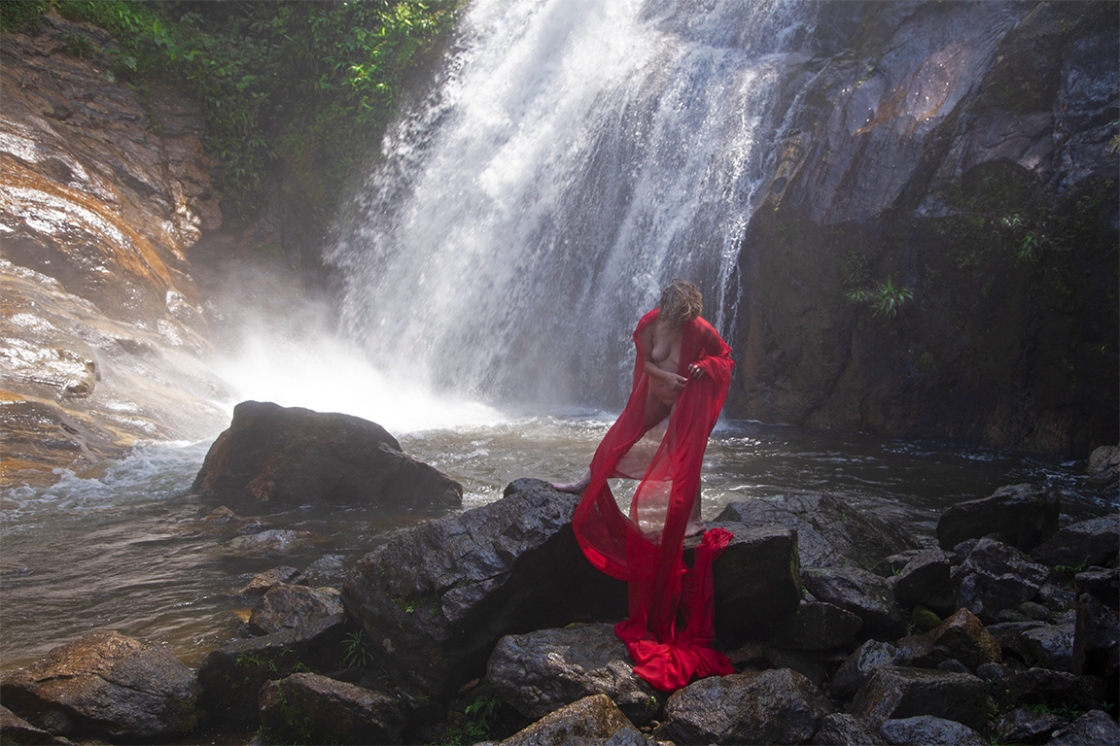 Red Canyon/ Canyon Vermelho, Sherry Wiggins and Luís Branco, archival digital print, 48” x 32,” 2017.
Red Canyon/ Canyon Vermelho, Sherry Wiggins and Luís Branco, archival digital print, 48” x 32,” 2017.
I am thinking about these words in Portuguese and English – encarnado/ incarnate, imanência/ immanence, vivência / exhistance, all in relationship to my performative photographs and drawings of the last several years. I made the work above, Red Canyon, with photographer Luís Branco. We made a large series of works in different locations in the Alentejo region of Portugal while I was a resident at the Obras Art Residency in the fall of 2017. One of the premises of this series is the relationship of the feminine body/mind and nature to the elements of water and earth and to the natural world. We will be premiering several images from this series during Month of Photography in Denver in the exhibition “Delirium” at Redline Contemporary Art Center in March of 2019. We will be exhibiting a larger selection from this series in Portugal in 2020. We have been talking about a title for this entire body of works. Luís likes the title ‘Encarnado’ for this large body of performative photographs.
I am not sure, I am thinking …
The rough translation of the noun ‘encarnado’ is ‘incarnation’ in English. Encarnado refers to something ‘made flesh,’ it implies the embodiment in the form of a person – of an idea, or of a religious ideal, or a divine spirit. As an adjective encarnado/a also refers to the color red (which I like). It can also refer to a spirit ‘possessing’ someone. In English I prefer the adjective ‘incarnate’ over the noun ‘incarnation.’ These are subtle differences in meaning. For me – encarnado, incarnation and incarnate all have a little bit too much of a religious implication and this is not exactly the meaning I am searching for. I wish I could speak in depth with my Portuguese and Brazilian friends about the meaning of these words. In the mean time I do feel in my recent body of performative works that at times I am “possessed” by other feminine beings, by feminine spirits that occupy these spaces in nature and in these sacred earthly places. Also the color red does figure in my work quite a bit both in the performative works and in the drawings…
encarnado/ incarnate, imanência / immanence, vivência / existence
Immanence or imanência in both English and Portuguese is a philosophical and theological term that I don’t wholly understand (especially when I try to read French philosopher Gilles Deleuze) but that I intuitively relate to. For me ‘immanence’ is the spiritual (or the divine ?) that is manifested in the material world. It is not something that is ‘outside’ the material world. I think there is a similar meaning here to the words encarnado/incarnate. Much of my work in performative photography has been about this manifestation of the feminine (divine? or spiritual? or incarnate?) in the natural world, in the material world.
My drawing practice has also been about articulating the connections between my inner and outer worlds. I made the sketch below and many others during the same period in Portugal that Luís and I made Red Canyon (above) and other performative works. The sketches I have been making over the last few years have been made in relationship to the performative images and photographs I have been making and to the landscapes and environments I have been inhabiting.
 sketch, India ink and acrylic ink on watercolor paper, 2017.
sketch, India ink and acrylic ink on watercolor paper, 2017.
So on the concept of immanence…
I have been reading an essay by John Rajchman titled “Mira Schendel’s Immanence” it is in the Tate Museum catalogue of Brazilian artist Mira Schendel’s exhibition of 2014. I have been compelled to study and look at Schendel’s work and though much of our work is quite different (there are some similarities in our drawings and paintings) I think that there is a philosophical underpinning in my work that relates to Schendel’s.
“ What does it mean to suppose there exists a pre-linguistic, pre-discursive, pre-textual bodily origin of thinking and yet to show, explore, ‘capture’ it or its ‘moment’ in art? While Mira’s work is filled with the movement of many graphic and pictorial elements, it was not meant to assert or to declare, it was supposed rather to be and to remain ‘opaque’ and ‘ephemeral.’ For it came from a process which, on the contrary, attempts to reinsert the material codes (and related ‘media,’ linguistic or pictorial) of saying and seeing things, back into a turbulent ‘moment of origin,’ in which they seem to break up or spin out of control, discovering a new freedom, no longer simply objects presented to outside subjects to be seen in frontal vision or to be read in linear time. The word ‘origin’ (or ‘moment of origin’) is thus not used in a simple psychological sense, more a phenomenological one, following the development of the Kantian idea of conditions of experience (the principle of phenomenology being that the conditions or origins of appearance are to be found in the appearances themselves).” – John Rajchman in the essay ‘Mira Schendel’s Immanence’- Tate Museum Catalogue, pg. 51.
Rajchman and Schendel have led me to thinking about this idea of the ‘moment of origin’ in some of the performative photographs I have made. Some of the most powerful images have this display of a ‘moment of origin.’ There are instinctual / incarnate / immanent – qualities that emerge in the photographic images that are very basic and raw. The images display this connection of the feminine and of the (spiritual? divine?) in the material world. Of course these specific images are culled/edited from thousands of other images, but that is the magic of digital photography, you can find these ‘moments’…
Drawing is another way for me to perform /embody/ think about the integration of my inner and outer worlds. The small sketches I have been making over the last several years are very simple, like ideograms. They relate to the elemental landscapes and territories I have inhabited and explored. They also relate to the concepts of immanence and the incarnate and to the various ‘moments of origin’ embodied in the performative photographs…
 sketch, acrylic ink on watercolor paper, 2017.
sketch, acrylic ink on watercolor paper, 2017.
 Woman on Evoramonte/Mulher em Evoramonte, Sherry Wiggins and Luís Branco, archival digital print, 48” x 32,” 2015.
Woman on Evoramonte/Mulher em Evoramonte, Sherry Wiggins and Luís Branco, archival digital print, 48” x 32,” 2015.
 Top of the Castle/Topo do Castelo, Sherry Wiggins and Luís Branco, archival digital print, 48” x 32,” 2015.
Top of the Castle/Topo do Castelo, Sherry Wiggins and Luís Branco, archival digital print, 48” x 32,” 2015.
 sketch, India ink and acrylic ink on watercolor paper, 2018.
sketch, India ink and acrylic ink on watercolor paper, 2018.
 sketch, India ink and acrylic ink on watercolor paper, 2018.
sketch, India ink and acrylic ink on watercolor paper, 2018.
 Woman in the Eye of the Lake /Mulher no Olho do Lago, Sherry Wiggins and Luís Branco, archival digital print, 32 x 48”, 2017.
Woman in the Eye of the Lake /Mulher no Olho do Lago, Sherry Wiggins and Luís Branco, archival digital print, 32 x 48”, 2017.
 Red Cascade / Cascata Vermelha, Sherry Wiggins and Fernando Lima, archival digital print, 18 x 24”, 2018.
Red Cascade / Cascata Vermelha, Sherry Wiggins and Fernando Lima, archival digital print, 18 x 24”, 2018.
Speaking of possession, of the word ‘encarnado/a,’ I made the above image with photographer Fernando Lima in Brazil in a beautiful waterfall near the Kaaysa Artist Residency. One of my fellow residents, artist Deco Adjiman, told me that I might have found or met or been possessed by the goddess of the waterfall ‘Oshun.’ I am not sure about this, but I do know I have found much magic and a wonderful sense of feminine space in these beautiful places in Brazil and Portugal…
 sketch, India ink on watercolor paper, 2018.
sketch, India ink on watercolor paper, 2018.
 Beach Chair / Cadeira de Praia, Sherry Wiggins and Fernando Lima, archival digital print, 18 x 24”, 2018.
Beach Chair / Cadeira de Praia, Sherry Wiggins and Fernando Lima, archival digital print, 18 x 24”, 2018.
 sketch, India ink and acrylic ink on watercolor paper, 2018.
sketch, India ink and acrylic ink on watercolor paper, 2018.
I think these images and drawings also relate to the word in Portuguese – ‘vivência’. It has several meanings in English – existence, living, perception, experience…. I love how Portuguese words contain these multiple meanings. All these meanings are ideas I am working with in both the performative works and the drawing works.
I am going to start drawing again, same ideas, big and small…
Now, that is what I call “Drama”.
LikeLike
Are you calling me a drama queen Joel? xo Sherry
LikeLike
Love, love, love Red Cascade.
LikeLiked by 1 person
Thank you Shelley!!! xo Sherry
LikeLike
This is so exploratory. Moving along a wooded path toward light. I’m gobsmacked and have to read it again, maybe again and again, to get closer to where you are, if that’s even possible (for me). Wonderful. Thank you.
LikeLiked by 1 person
You are right it is totally exploratory. Not sure I have any idea (where I am ) but thank you for always trying to figure it out with me… love Sherry
LikeLike